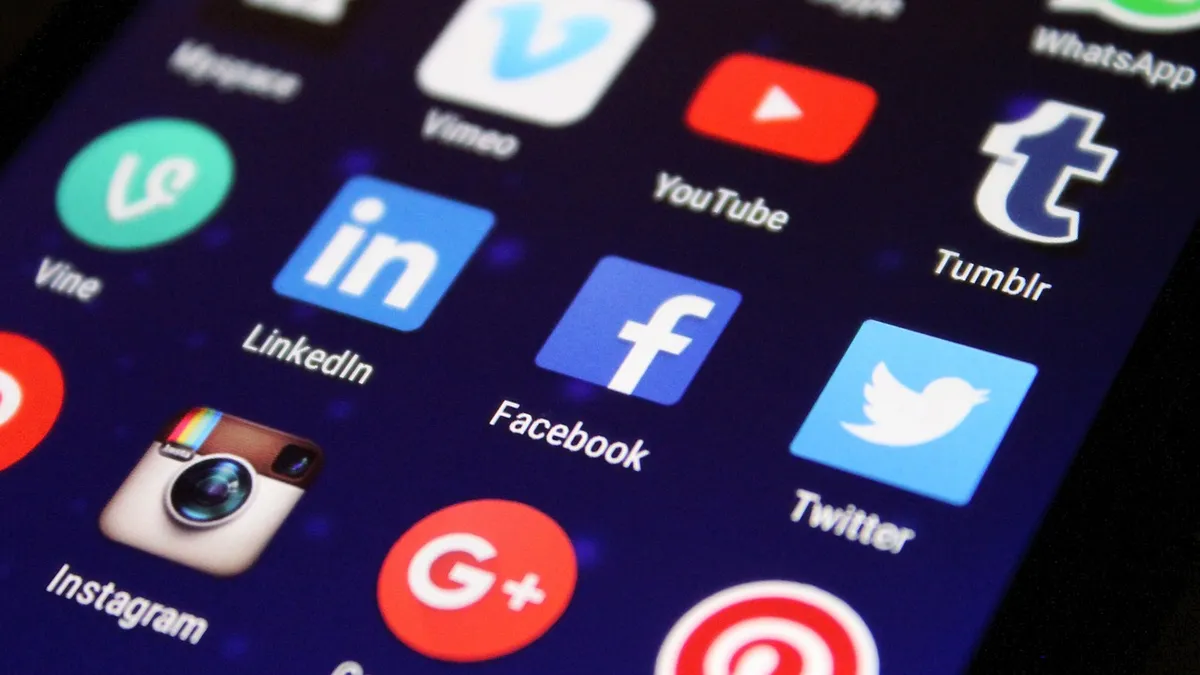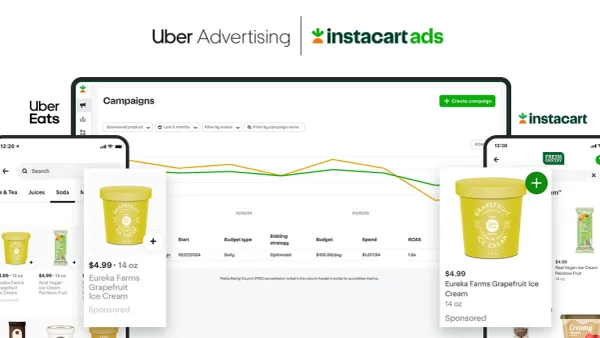When Hershey reintroduced its popular Reese's Peanut Butter Christmas Trees two years ago, the candy maker's annual tradition was met with sudden and unexpected backlash. Consumers flocked to Facebook and Twitter to bash the oddly shaped candy that looked more like a chunk of coal than a festive Christmas tree.
Rather than simply apologizing or pledging to improve the design, Hershey's social media team decided to capitalize on the mistake and turn the faux pas into a social marketing bonanza. The confectionery brand responded to the criticism with self-deprecating humor, including an #AllTreesAreBeautiful hashtag and a series of clever ads making fun of the chocolaty blob.
The 123-year old company's all-out blitz on social platforms that are a fraction of its age reflects the growing importance of social media to provide businesses a chance to speak directly to their consumers, build trust and stay relevant in a food industry beset by hyper-competitiveness and slowing growth.
"When you think about the deepening consumer connections, it's about being engaging and top of mind, critically important in this highly impulsive and responsive category," Michele Buck, the new CEO of Hershey, told analysts in March. "We turned what could have been a negative into an amazing opportunity to delight our customers."
Getting in the Christmas spirit with my... Oh wait its a blob #ReesesChristmasTrees #reesesfail #stilltastesgood pic.twitter.com/RXjpiAbUkR
— Sarah O'Brien (@sarbear0130) November 26, 2015
For decades, food companies have promoted their products predominately through the usual media formats — television, radio, newspapers and magazines. But the rapid growth of personal computers and mobile devices connected to Facebook, Twitter and Instagram has forced Hershey, Nestle and other food and beverage giants to become more active online and engaged with their consumers.
Social media is the place to be heard
Social media is more than a place to chat with friends — it's a place for influential audiences to congregate and be heard. Businesses know they have to stay engaged with consumers on social media for their brands to remain relevant.
Over time, brands have refined their social media approaches, learning what worked and what didn't. Many companies have realized most consumers don't want to be pestered on social media by corporate America to purchase its products even if they are spending much of their time online.
A 2014 survey of more than 10,000 "connected" shoppers from management consulting firm A.T. Kearney found more than half of the respondents were online nearly every hour they were awake. Just over 60% went online to express their opinions and be heard, while 95% used their computer to learn about and research new topics.
Food shoppers are no different. Consumers are more interested than ever in knowing about their food, such as learning whether it's organic, contains genetically modified ingredients, has artificial colors or flavors and where it is grown. Thanks to the internet, the public can quickly research products while shopping, giving them a chance to make a more informed purchasing decision right away.
"[Companies] really need to be more listening than telling — listening to all those social media movements that are driving the consumer's wants and buys."
Sophie Ann Terrisse
Senior Adviser, 26FIVE
This change was particularly evident last year during the ongoing battle over GMO ingredients. In 2016, several months before a federal law was signed mandating food products with these ingredients be labeled, major food companies Mars, General Mills, Campbell Soup, Kellogg and Conagra all announced they would be taking action on their own. At the time, food executives said they had no choice but to include the ingredients on their labels, citing growing pressure from the public.
Food companies have changed how they market their products as consumers spend more time on the web, according to Sophie Ann Terrisse, senior adviser with brand management firm 26FIVE. Rather than simply describing how the product looks or tastes, a growing number of manufacturers are resorting to pitches that tug on the shopper’s emotions or personal beliefs.
"Consumers are not buying by looking at the storytelling so much as they are buying based on their own principles as a consumer. They have the choice of what they want to read about, what they want to learn about and whether the brand meets those principles," Terrisse told Food Dive. "[Companies] really need to be more listening than telling — listening to all those social media movements that are driving the consumer's wants and buys."
'Closing the mystery gap'
A challenge for giant food and beverage corporations participating in social media is how to humanize brands — a key hurdle in their efforts to build trust and credibility.
Nestle USA is focusing its marketing efforts on "closing the mystery gap about what is going on behind the logo" by spotlighting the company's workers, farmers and suppliers, Liz Caselli-Mechael, manager of corporate communications, told Food Dive.
Last year, the manufacturer of Lean Cuisine, Edy's ice cream and Hot Pockets produced more of its own content highlighting these individuals than ever before. The result was 380,000 engagements — defined as those reading or interacting with the content in some way — a 370% increase from 2015.
“Making a direct personal connection to the consumer has always been the gold standard for companies, and I think the tools are better now than they’ve ever been,” Caselli-Mechael said. "When you have the flexibility in the digital space to articulate people respond really well, and I think that emotional connection does translate into feeling more pride and trust in the products we sell.”
Its efforts to boost brand loyalty extend beyond the web, with Nestle involved in programs and job fairs that promote hiring veterans. In the process, the company is able to shine a light on its own veterans, too. This effort has been popular with consumers on social media; some people called it "amazing" or pledged to have "more Nestle in my house."
“Trust is a factor in purchasing decisions and in long-term brand loyalty for purchases, and trust is something you have to invest in with the consumer every day. It takes a lot to gain and not that much to lose."
Liz Caselli-Mechael
Manager of corporate communications for Nestle USA
Nestle’s latest activity in social media has not been focused exclusively on promoting its products. Instead, it has taken stances on child labor, supported free water as a human right and touted its commitment to be gender balanced by next year.
It can be difficult for food manufacturers to measure the impact their social media efforts have on sales or their bottom line, but favorable reactions to marketing campaigns can foster a deeper connection and trust in the products — ultimately leading to additional sales.
“Trust is a factor in purchasing decisions and in long-term brand loyalty for purchases, and trust is something you have to invest in with the consumer every day. It takes a lot to gain and not that much to lose,” Caselli-Mechael said. "[Our executives] see the value in driving these human connections and investing in reputation and trust.”
While social media can be a valuable research and marketing tool for companies, it takes time and a willingness to invest in understanding the shopper, according to Jonah Berger, a professor at the Wharton School of the University of Pennsylvania who studies social influence, consumer behavior and how products, ideas and behaviors catch on.
“It’s not social media itself that drives sales — it’s the consumer conversations it generates. You can have 10 million friends or followers, but if they don’t share your stuff, it won’t move sales,” said Berger. “It takes resources, and if you’re not willing to actively engage with consumers, it’s not worth being there. You can’t just tweet at people; you have to engage in a dialogue.”
'The Sweetest Comeback in the History of Ever'
For Hostess Brands, the company knew its return would take an ambitious campaign incorporating both new and old media.
Following an eight-month absence from the marketplace after the company went bankrupt and liquidated, Hostess launched a campaign in 2013 touting “The Sweetest Comeback in the History of Ever.” The grammatically incorrect slogan, which came together after an all-night brainstorming session, was written that way on purpose in a bid to appeal to the way younger people talk on social media.
The new owners who purchased the Twinkie and CupCakes brands out of bankruptcy wanted to reach the snack brand's core audience — moms — while also targeting the younger consumers that were necessary to keep the brand relevant and growing, according to Dave Lubeck, the executive vice president at Bernstein-Rein who oversaw the campaign for the advertising agency. They had a limited operating budget and only three months to make it happen.
The best way to maximize their return was to leverage the emotions of consumers saddened by the loss of a childhood snack using both social and traditional media, Lubeck told Food Dive. While billboards announcing the brand's imminent return dotted the landscape in Chicago, New York and Los Angeles, the company also turned to platforms like Vine and Instagram to drum up excitement before the re-launch. Consumers took pictures of the billboard and shared them online — proof that efforts to tap into both new and traditional platforms were succeeding and generating excitement.
“We knew social media and knew that half the country practically was upset with this American icon going away. We knew we could leverage that.”
Dave Lubeck
Executive Vice President, Bernstein-Rein
Less than a month before Twinkies, CupCakes and other Hostess treats returned to grocery store shelves, the company asked consumers to "prepare their cakeface" by stretching their mouths in unique ways and posting pictures on social media with the #cakeface hashtag. Street teams promoted the campaign: T-shirts and buttons were handed out and "mouth yoga exercises" took place in Times Square and other places.
The comeback tour was a success, especially among millennials who shun the usual direct marketing messages, with Hostess Brands posting record sales. Twinkie and Cupcakes sales increased 185% and 53%, respectively, in August 2013 compared to the same month a year earlier just before the bankruptcy.
“Because of the minimal amount of money we had to spend and what we were trying to do, it wouldn't work unless it was integrated. We totally needed social to make this thing happen,” said Lubeck. “We knew social media and knew that half the country practically was upset with this American icon going away. We knew we could leverage that.”
The 'inherent risks' of social — and why brands will keep investing anyway
As more food companies turn to social media, a few businesses also are finding that it can be unforgiving with even the most innocent of mistakes.
Campbell Soup was criticized for commemorating the attack on Pearl Harbor in 2013 with an image of its SpaghettiOs mascot holding an American flag in a tweet. The company deleted the message, later saying it meant to honor those who died, not offend people.
Nestle's DiGiorno pizza brand learned about the pitfalls of social media, too. When the wife of an NFL player stood by her husband following a domestic violence incident, a #WhyIStayed hashtag trended on Twitter, with many victims of domestic violence sharing harrowing stories of abuse. The pizza brand joined the conversation, tweeting "#WhyIStayed. You had Pizza." Minutes later, the company deleted the tweet and apologized, saying it was unaware of the hashtag's meaning before sending out its message.
But despite these stumbles, food companies are unlikely to abandon social media as a channel to market their wares in a highly competitive, multi-billion dollar industry.
"Social media has inherent risks and all social media teams make mistakes," Nestle’s Caselli-Mechael said. "The most important thing is to learn from these mistakes and continue to invest because the long-term benefits of trust-building outweigh the risks."























